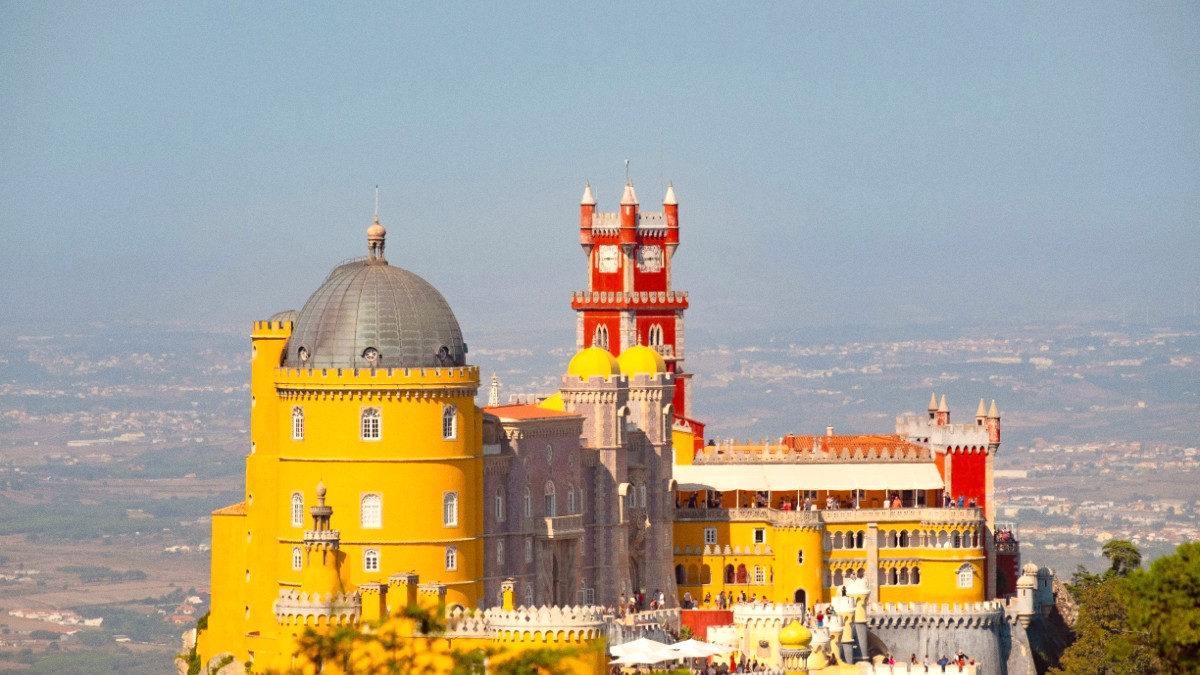
Lisbon, Portugal
The air often carries a hint of damp earth and blooming flowers, a testament to its unique microclimate. Sunlight filters through dense tree canopies, illuminating unexpected architectural details. Every turn uncovers a new vista, a different historical layer, or another pathway waiting for discovery. This town offers more than just sights; it gives an immersive experience. You do not just visit Sintra; you step into its narrative, becoming part of its enduring magic. This guide accompanies that journey, aiding you in unlocking the town’s secrets and savoring its beauty. Prepare to be enchanted by a place where nature and human creativity blend into a masterpiece. Your adventure in Sintra holds memories for a lifetime, filled with awe and discovery.
Sintra's unique position, nestled between mountains and the sea, shapes its weather, its vegetation, and the very character of its architecture.
It is a place where the landscape plays as much a role in its identity as its historical buildings.
Sintra’s history stretches back many centuries, leaving layers of influence visible. Its strategic position made it an important settlement for various civilizations. The area first saw occupation by prehistoric peoples, followed by Roman presence. Its most visible early impact comes from the Moors. In the 8th century, Moorish forces occupied the Iberian Peninsula. They built the Moorish Castle (Castelo dos Mouros) high on a ridge overlooking the town. This fortress served as a defensive stronghold, offering panoramic views of the surrounding land and sea. It guarded the approaches to Lisbon and controlled trade routes. The castle’s walls still stand today, a testament to its strategic position and the engineering skills of its builders.
With the Christian Reconquista, Sintra fell to King Afonso Henriques in 1147. It then became a favored summer retreat for Portuguese royalty. The Sintra National Palace, in the town center, served as a royal residence for centuries. Each monarch added their mark, creating a mix of Gothic, Manueline, and Moorish styles. The 19th century brought a significant transformation under King Ferdinand II, the "Artist King." Inspired by the Romantic movement, Ferdinand envisioned Sintra as a place where nature and human creation would merge in harmony. He transformed an old monastery into the whimsical Pena Palace, a colorful, eclectic castle embodying Romantic architecture. Other wealthy aristocrats followed, building grand estates and gardens like Quinta da Regaleira and Monserrate Palace. In 1995, UNESCO recognized Sintra's cultural landscape as a World Heritage site. This designation celebrates the town's harmonious integration of natural beauty with its remarkable historical buildings, parks, and gardens.
Construction of the Castelo dos Mouros, a strategic defensive fortress.
King Afonso Henriques reclaims Sintra, establishing royal presence.
Centuries of royal residence, with continuous architectural additions.
Romantic transformation of Pena Palace and surrounding landscapes.
Recognition for its cultural landscape, blending nature and historical buildings.
Sintra represents an unique fusion of cultural and natural heritage, reflecting various historical periods and artistic movements.
Its story is one of conquest, royal retreat, and artistic vision. Visiting Sintra means walking through this living history, experiencing the echoes of kings, poets, and dreamers who shaped this extraordinary place.
Sintra's story is also one of enduring natural splendor. The landscape itself acts as a canvas upon which these historical periods and artistic movements have left their lasting marks.
This town offers an immersive experience, inviting visitors to step directly into its narrative.
Sintra presents a captivating blend of historical grandeur and natural beauty. The town center itself offers narrow, winding streets, charming shops, and traditional eateries. Nearby, the Moorish Castle provides sweeping panoramic views from its ancient walls, offering a glimpse into Sintra’s defensive past.
Venturing beyond these well-known sites, you find Quinta da Regaleira. This estate is a mystical charm with its elaborate gardens, grottoes, and the famous Initiation Well, a place for exploration and quiet reflection. The Sintra National Palace, located right in the town square, is a testament to centuries of royal residence, with its distinct conical chimneys. Slightly further afield, the serene Convent of the Capuchos offers a stark contrast, showing an austere Franciscan monastery built in harmony with nature, largely from cork and stone. The Monserrate Palace, with its intricate design and diverse botanical gardens, gives another example of Sintra's architectural and horticultural richness.
Ancient walls with panoramic vistas of the surrounding landscape and coastline.
A mystical estate with elaborate gardens, grottoes, and a famous Initiation Well.
A , whimsical castle embodying Romantic architecture, a true storybook creation.
The entire area belongs to the Sintra-Cascais Natural Park, offering opportunities for walking and exploring its diverse flora.